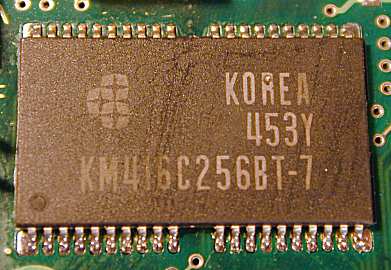[ The PC Guide | Systems and Components Reference Guide | Hard Disk Drives | Construction and Operation of the Hard Disk | Hard Disk Cache and Cache Circuitry ]
Cache Size
In the last couple of years, hard disk manufacturers have dramatically increased the size of the hard disk buffers in their products. Even as recently as the late 1990s, 256 to 512 kiB was common on consumer drives, and it was not unusual to find only 512 kiB buffers on even some SCSI units (though many had from 1 MiB to 4 MiB). Today, 2 MiB buffers are common on retail IDE/ATA drives, and some SCSI drives are now available with a whopping 16 MiB!
I believe there are two main reasons for this dramatic increase in buffer sizes. The first is that memory prices have dropped precipitously over the last few years. With the cost of memory only about $1 per MiB today, it doesn't cost much to increase the amount the manufacturers put into their drives. The second is related to marketing: hard disk purchasers have a perception that doubling or quadrupling the size of the buffer will have a great impact on the performance of the hardware.
|
The cache chip from a Seagate Barracuda hard disk |
The size of the disk's cache is important to its overall impact in improving the performance of the system, for the same reason that adding system memory will improve system performance, and why increasing the system cache will improve performance as well. However, the attention that the size of the hard disk buffer is getting today is largely unwarranted. It has become yet another "magic number" of the hardware world that is tossed around too loosely and overemphasized by salespeople. In fact, a benchmarking comparison done by StorageReview.com showed very little performance difference between 512 kiB and 1 MiB buffer versions of the same Maxtor hard drive. See this section for more on this performance metric.
So, where does this leave us? Basically, with the realization that the size of the buffer is important only to an extent, and that only large differences (4 MiB vs. 512 kiB) are likely to have a significant impact on performance. Also remember that the size of the drive's internal buffer will be small on most systems compared to the amount of system memory set aside by the operating system for its disk cache. These two caches, the one inside the drive and the one the operating system uses to avoid having to deal with the drive at all, perform a similar function, and really work together to improve performance.
![]() Next: Write Caching
Next: Write Caching
| The PC Guide
(http://www.PCGuide.com) Site Version: 2.2.0 - Version Date: April 17, 2001 © Copyright 1997-2004 Charles M. Kozierok. All Rights Reserved. |
Not responsible for any loss resulting from the use of this site. Please read the Site Guide before using this material. |
